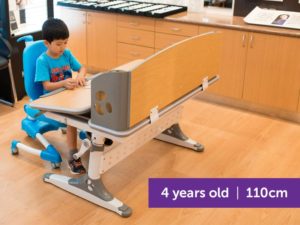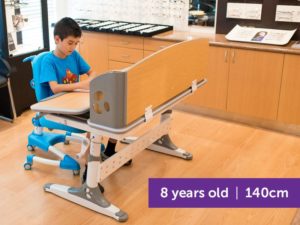We often have parents wanting to know what to do to stop their child’s prescription from increasing, or how to best prepare their eyes for school. 80% of learning occurs through vision, so we know how important it is to protect their eyes as much as possible. To help out, we have put together some little known tips to answer your questions!
#1 homework for kids under 5 is… PLAYING!
Play allows toddlers to explore their surroundings and discover how to best interact with it. Once you know your place in the world, learning about relationships between shapes and numbers (i.e. English and Maths) becomes much easier.
Refrain from technology
Delay the use of electronic devices as long as possible – ideally for the first 3 years of life. This allows proper maturation and strengthening of the eye muscles that control movement and focusing.
Take regular breaks
Near tasks such as reading, computer, phone and tablet use, and homework are all quite visually demanding. Eyes need a break every 20 minutes of reading/screen time to relax and re-align themselves.
Especially for younger children whose eyes are still developing, this visual stress is the main cause of increased short-sightedness. Moreover eyes that have grown up being stressed are more likely to continue to over-work into adulthood, causing symptoms like headaches, eye soreness and tiredness.
Eyes love the sun
Research shows that children should be spending at least 60 to 90 minutes outdoors every day. Try to aim for a 1:1 ratio of gadget time to outdoor play. I.e. 1 hour on the iPad = 1 hour outdoors e.g. family picnic, ball games, swimming, skipping, beach, going for a walk, play ground, park, outdoor play in recess, chatting – the options are endless!
Light it up
Good lighting when working is essential to decrease eye strain. If using a digital device, the screen should not be brighter than the environment.
Good working distance
This avoids unnecessary eye strain. As a general guide:
- The distance from the eyes to the page should be elbow to first knuckle.
- Reading: 35cm away. Page should be tilted back 20°
- Computer: 50cm away
- TV: 3 metres away
Good posture
- No leaning or reading lying down, as this produces an uneven strain on eyes.
- Place reading material directly in front, not off to the side; especially important for computer work.
- Make sure both feet touch the floor. If your child’s feet can’t reach the floor, have them sit in a smaller chair or place something beneath their feet.
Avoid reading in the car
Constant movement requires greater concentration and may cause eye spasms and motion sickness.
Glasses for reading
Have a dedicated pair of reading glasses even if your child has good vision or already has a prescription. They will help to relax your child’s eyes while they are still growing and maturing.
We hope these tips help to make a big difference in your child’s vision and school life. If you have any questions, it would be our pleasure to provide a detailed assessment of your child’s eye health and vision. Please call on 3345 3383 or email [email protected].



